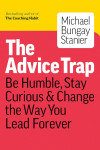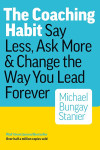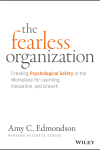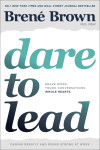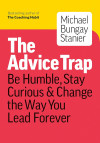The Coaching Habit
Say Less, Ask More & Change the Way You Lead Forever
"The Coaching Habit" presents a radical departure from traditional leadership approaches, focusing on the power of curiosity and questions rather than advice-giving. The book challenges the common assumption that leaders must have all the answers, instead proposing that effective leadership comes from asking the right questions.
The author introduces a practical framework built around seven essential questions that can transform any conversation into a coaching opportunity. Through these questions, leaders learn to build stronger relationships, develop their team's capabilities, and create more autonomous and motivated employees.
What sets this book apart is its focus on making coaching a daily habit rather than a formal process. It provides concrete tools for breaking the "advice-giving addiction" and creating a more empowering leadership style that benefits both the leader and their team.
The book is designed to be immediately applicable, offering concrete tools and techniques that readers can start using right away to improve their leadership skills and team dynamics.
"Go on, keep on failing. Just remember to next time fail better" - Samuel Beckett
By reading "The Coaching Habit," you will:
- Master the art of asking powerful questions: Learn seven essential questions that form the backbone of effective coaching conversations, enabling you to drive meaningful discussions
- Break the advice-giving habit: Understand why giving advice can be counterproductive and learn techniques to resist the urge to solve others' problems
- Create a coaching culture: Transform daily interactions into coaching opportunities that develop your team's capabilities and confidence
- Build stronger relationships: Learn how to create psychological safety and trust through better conversations
You may also want to consider:
- "Drive" by Daniel Pink Explores the fundamental motivators (autonomy, mastery, purpose) that make coaching effective and explains why traditional "carrot and stick" approaches often fail.
- "Non-Violent Communication" by Marshall Rosenberg Provides the foundational framework for understanding human needs and conducting compassionate conversations, directly supporting the book's coaching methodology.
- "Thinking, Fast and Slow" by Daniel Kahneman Illuminates how people make decisions and form habits, helping coaches understand and work with natural cognitive processes during coaching conversations.
- "Leadership and Self-Deception" by The Arbinger Institute Examines how our own biases and self-justifying behaviors can sabotage our coaching efforts, complementing the book's advice about taming the "advice monster."
- "Make it Stick" by Peter C. Brown Explains the science of effective learning and skill development, crucial for understanding how to make coaching insights last.
- "Humble Inquiry: The Gentle Art of Asking Instead of Telling" by Edgar H. Schein: This book explores the power of asking questions in a way that encourages genuine dialogue and collaboration. It goes beyond the basic coaching questions outlined in "The Coaching Habit" and offers a nuanced framework for using inquiry to build trust, foster understanding, and unlock potential. Schein's work emphasises the importance of humility in the coaching process, aligning with the idea of avoiding the "Rescuer" role and empowering coachees to find their own solutions.
- "Active Listening: Improve Your Ability to Listen and Lead" by Michael P. Nichols: This book provides a comprehensive guide to developing active listening skills, a crucial aspect of effective coaching. Building on the concept of silence as a powerful tool, this book offers practical techniques for truly hearing and understanding the coachee's perspective. It emphasises the non-verbal cues, empathetic responses, and questioning techniques that enhance listening and create a more supportive coaching environment.
- "Immunity to Change: How to Overcome It and Unlock the Potential in Yourself and Your Organization (Leadership for the Common Good)" by Robert Kegan and Lisa Laskow Lahey: This book explores the hidden commitments and beliefs that hold us back from making desired changes. It provides a framework for understanding the underlying dynamics of resistance to change, a common challenge in coaching situations. By understanding these dynamics, coaches can better support coachees in identifying and overcoming their own internal barriers to growth and development.
- "Co-Active Coaching: Changing Business, Transforming Lives" by Kimsey-House, Whitworth, and Sandahl: This book introduces the Co-Active Coaching model, which emphasises a collaborative and holistic approach to coaching. It expands on the fundamental coaching questions in "The Coaching Habit" and provides a structured framework for guiding coachees through a process of self-discovery, goal setting, and action planning.
- "Solution-Focused Brief Coaching: A Handbook for Practitioners" by Chris Iveson, Evan George, and Harvey Ratner: This book focuses on a solution-oriented approach to coaching, which emphasises identifying and leveraging coachees' strengths and resources to achieve desired outcomes. It offers practical techniques for shifting the focus from problems to solutions and facilitating rapid progress in coaching sessions.
- Ask, Don’t Tell: The most effective way to coach is by asking questions that help people find their own solutions, rather than giving advice.
- Make Coaching a Daily Habit: Instead of formal, scheduled sessions, incorporate brief coaching moments into your daily interactions.
- Master the Seven Essential Questions: These questions form the backbone of effective coaching conversations and can be applied in various situations.
- Initiate and focus the conversation: “What’s on your mind?” and “And what else?” help to open up the discussion and encourage a deeper exploration of the situation.
- Identify the core challenge: “What’s the real challenge here for you?” helps to move beyond surface-level complaints and pinpoint the root of the issue.
- Uncover underlying needs and motivations: “What do you want?” and “How can I help you?” encourage the coachee to articulate their desired outcome and uncover the needs driving their behaviour.
- Encourage strategic thinking and learning: “If you’re saying yes to this, what are you saying no to?” prompts the coachee to consider the broader implications of their choices. “What was most useful for you?” encourages reflection and reinforces learning.
- Focus on the Real Challenge: Often, the first problem presented isn’t the real issue. Use questions to dig deeper and identify the core challenge.
- Create Space for Learning: End coaching interactions by asking what was most useful, encouraging reflection and internalization of insights.
- Understand Underlying Motivations: Recognize that people are driven by fundamental needs and wants, and tailor your coaching approach accordingly.
- Embrace Silence: Don’t rush to fill quiet moments. Give people time to think and formulate their responses.
- Be Mindful of the Drama Triangle: Recognize when you’re falling into the roles of Victim, Persecutor, or Rescuer, and strive to maintain a coach-like stance.
- Balance Strategy and Development: While addressing immediate needs is important, focus on long-term employee growth and development.
- Practice Self-Awareness: Recognize your own triggers for giving advice and work on replacing them with curiosity and questions.
Q: Why is developing a “coaching habit” important?
A: A coaching habit helps leaders guide employees towards self-sufficiency, prevents managers from being overwhelmed, and connects teams to work that matters most.
Q: What are the three foundational questions in coaching conversations?
A: The Kickstart Question (“What’s on your mind?”), the AWE Question (“And what else?”), and the Focus Question (“What’s the real challenge here for you?”).
Q: How can a leader identify an employee’s underlying needs and wants?
A: By using the Foundation Question (“What do you want?”) and understanding the nine basic needs/wants that drive human behavior.
Q: What is the purpose of the “Lazy Question”?
A: The Lazy Question (“How can I help?”) helps clarify if an employee is asking for something specific or just venting, and pushes them to be more precise about their needs.
Q: How can leaders balance taking on new opportunities with existing commitments?
A: By using the Strategic Question (“If you’re saying yes to this, what are you saying no to?”) to evaluate the trade-offs of new commitments.
- When you find yourself giving great advice that nobody follows: Transform your approach from telling to asking, and watch your impact multiply
- When your calendar is packed with people asking “just 5 minutes” of your time: Learn to make every conversation more purposeful and empowering
- When you’re excellent at solving problems but your team isn’t growing: Break free from the “advice monster” and develop a self-sufficient team
- When you’ve reached the point where being the smartest person in the room is holding you back: Shift from problem-solver to potential-unleasher
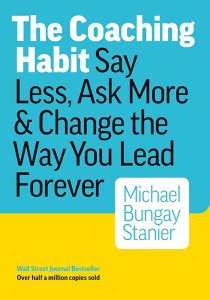
Your support helps me maintain and improve the book recommendations for everyone.
